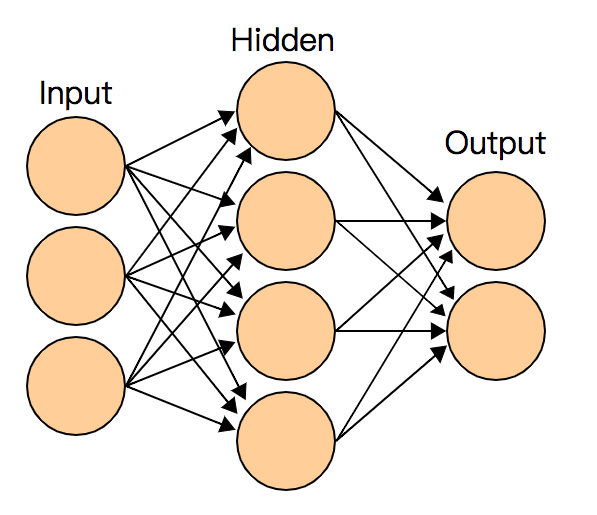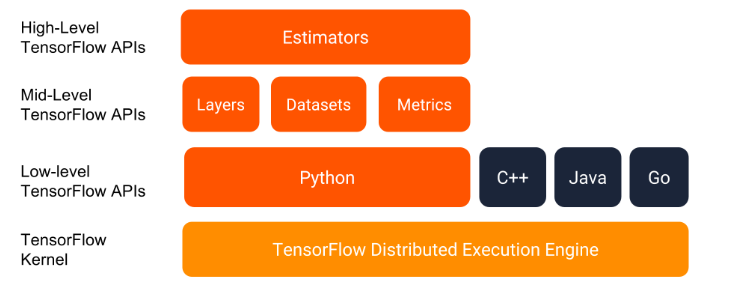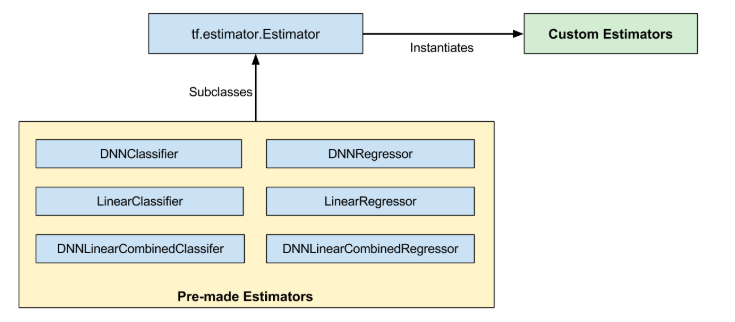Suppose you have a LibSVM-formatted dataset that has run LR and GBDT, and want to know the effect of DNN quickly. Then, this article is for you.
Although the popularity of deep learning research and application has been on the rise for many years, and TensorFlow is well known amongst users who specialize in algorithms, not everyone is familiar with this tool. In addition, it is not a matter of instantly building a simple DNN model based on a personal dataset, especially when the dataset is in LibSVM format. LibSVM is a common format for machine learning, and is supported by many tools, including Liblinear, XGBoost, LightGBM, ytk-learn and xlearn. However, TensorFlow has not provided an elegant solution for this either officially or privately, which has caused a lot of inconvenience for new users, and is unfortunate considering it is such a widely used tool. To this end, this article provides a fully verified solution (some code), which I believe can help new users save some time.
The code in this article can be used:
The coding follows the following principles:
This article only introduces the most basic DNN multi-class classification training evaluation code. For more advanced complex models, see outstanding open-source projects, such as DeepCTR. Subsequent articles will share the application of these complex models in practical research.

Below are four advanced code and concepts for TensorFlow to train DNN for LibSVM-formatted data. The latter two are recommended.
Here are three choices:
The code is as follows:
import numpy as np
from sklearn.datasets import load_svmlight_file
from tensorflow import keras
import tensorflow as tf
feature_len = 100000 # 特征维度,下面使用时可替换成 X_train.shape[1]
n_epochs = 1
batch_size = 256
train_file_path = './data/train_libsvm.txt'
test_file_path = './data/test_libsvm.txt'
def batch_generator(X_data, y_data, batch_size):
number_of_batches = X_data.shape[0]/batch_size
counter=0
index = np.arange(np.shape(y_data)[0])
while True:
index_batch = index[batch_size*counter:batch_size*(counter+1)]
X_batch = X_data[index_batch,:].todense()
y_batch = y_data[index_batch]
counter += 1
yield np.array(X_batch),y_batch
if (counter > number_of_batches):
counter=0
def create_keras_model(feature_len):
model = keras.Sequential([
# 可在此添加隐层
keras.layers.Dense(64, input_shape=[feature_len], activation=tf.nn.tanh),
keras.layers.Dense(6, activation=tf.nn.softmax)
])
model.compile(optimizer=tf.train.AdamOptimizer(),
loss='sparse_categorical_crossentropy',
metrics=['accuracy'])
return model
if __name__ == "__main__":
X_train, y_train = load_svmlight_file(train_file_path)
X_test, y_test = load_svmlight_file(test_file_path)
keras_model = create_keras_model(X_train.shape[1])
keras_model.fit_generator(generator=batch_generator(X_train, y_train, batch_size = batch_size),
steps_per_epoch=int(X_train.shape[0]/batch_size),
epochs=n_epochs)
test_loss, test_acc = keras_model.evaluate_generator(generator=batch_generator(X_test, y_test, batch_size = batch_size),
steps=int(X_test.shape[0]/batch_size))
print('Test accuracy:', test_acc)The code above is the code used in practical research earlier. It was able to complete the training task at that time, but the shortcomings of the code are obvious. On the one hand, the space complexity is low. The resident memory of big data will affect other processes. When it comes to big datasets, it is ineffective. On the other hand, the availability is poor. The batch_generator needs to be manually encoded to realize the batch of data, which is time-consuming and error-prone.
TensorFlow Dataset is a perfect solution. However, I was not familiar with Dataset and did not know how to use TF low-level API to parse LibSVM and convert SparseTensor to DenseTensor, so I put it on hold due to limited time at that time, and the problem was solved later. The key point is the decode_libsvm function in the following code.
After LibSVM-formatted data is converted into Dataset, DNN is unlocked and can run freely on any large dataset.
The following in turn describes the application of Dataset in Keras model, Keras to Estimator, and DNNClassifier.
The following is the Embedding code. The output of the first hidden layer is used as Embedding:
def save_output_file(output_array, filename):
result = list()
for row_data in output_array:
line = ','.join([str(x) for x in row_data.tolist()])
result.append(line)
with open(filename,'w') as fw:
fw.write('%s' % '\n'.join(result))
X_test, y_test = load_svmlight_file("./data/test_libsvm.txt")
model = load_model('./dnn_onelayer_tanh.model')
dense1_layer_model = Model(inputs=model.input, outputs=model.layers[0].output)
dense1_output = dense1_layer_model.predict(X_test)
save_output_file(dense1_output, './hidden_output/hidden_output_test.txt')The LibSVM-formatted data read by load_svmlight_file is changed to Dataset read by decode_libsvm.
import numpy as np
from sklearn.datasets import load_svmlight_file
from tensorflow import keras
import tensorflow as tf
feature_len = 138830
n_epochs = 1
batch_size = 256
train_file_path = './data/train_libsvm.txt'
test_file_path = './data/test_libsvm.txt'
def decode_libsvm(line):
columns = tf.string_split([line], ' ')
labels = tf.string_to_number(columns.values[0], out_type=tf.int32)
labels = tf.reshape(labels,[-1])
splits = tf.string_split(columns.values[1:], ':')
id_vals = tf.reshape(splits.values,splits.dense_shape)
feat_ids, feat_vals = tf.split(id_vals,num_or_size_splits=2,axis=1)
feat_ids = tf.string_to_number(feat_ids, out_type=tf.int64)
feat_vals = tf.string_to_number(feat_vals, out_type=tf.float32)
# 由于 libsvm 特征编码从 1 开始,这里需要将 feat_ids 减 1
sparse_feature = tf.SparseTensor(feat_ids-1, tf.reshape(feat_vals,[-1]), [feature_len])
dense_feature = tf.sparse.to_dense(sparse_feature)
return dense_feature, labels
def create_keras_model():
model = keras.Sequential([
keras.layers.Dense(64, input_shape=[feature_len], activation=tf.nn.tanh),
keras.layers.Dense(6, activation=tf.nn.softmax)
])
model.compile(optimizer=tf.train.AdamOptimizer(),
loss='sparse_categorical_crossentropy',
metrics=['accuracy'])
return model
if __name__ == "__main__":
dataset_train = tf.data.TextLineDataset([train_file_path]).map(decode_libsvm).batch(batch_size).repeat()
dataset_test = tf.data.TextLineDataset([test_file_path]).map(decode_libsvm).batch(batch_size).repeat()
keras_model = create_keras_model()
sample_size = 10000 # 由于训练函数必须要指定 steps_per_epoch,所以这里需要先获取到样本数
keras_model.fit(dataset_train, steps_per_epoch=int(sample_size/batch_size), epochs=n_epochs)
test_loss, test_acc = keras_model.evaluate(dataset_test, steps=int(sample_size/batch_size))
print('Test accuracy:', test_acc)This solves the problem with high space complexity, and ensures the data does not occupy a large amount of memory.
However, in terms of availability, two inconveniences still exist:
Another high-level API of TensorFlow is Estimator, which is more flexible. Its standalone code is consistent with the distributed code, and the underlying hardware facilities need not be considered, so it can be conveniently combined with some distributed scheduling frameworks (such as xlearning). In addition, Estimator seems to gets more comprehensive support from TensorFlow than Keras.

Estimator is a high-level API that is independent from Keras. If Keras was used before, it is impossible to reconstruct all the data into Estimator in a short time. TensorFlow also provides the model_to_estimator interface for Keras models, which can also benefit from Estimator.
from tensorflow import keras
import tensorflow as tf
from tensorflow.python.platform import tf_logging
# 打开 estimator 日志,可在训练时输出日志,了解进度
tf_logging.set_verbosity('INFO')
feature_len = 100000
n_epochs = 1
batch_size = 256
train_file_path = './data/train_libsvm.txt'
test_file_path = './data/test_libsvm.txt'
# 注意这里多了个参数 input_name,返回值也与上不同
def decode_libsvm(line, input_name):
columns = tf.string_split([line], ' ')
labels = tf.string_to_number(columns.values[0], out_type=tf.int32)
labels = tf.reshape(labels,[-1])
splits = tf.string_split(columns.values[1:], ':')
id_vals = tf.reshape(splits.values,splits.dense_shape)
feat_ids, feat_vals = tf.split(id_vals,num_or_size_splits=2,axis=1)
feat_ids = tf.string_to_number(feat_ids, out_type=tf.int64)
feat_vals = tf.string_to_number(feat_vals, out_type=tf.float32)
sparse_feature = tf.SparseTensor(feat_ids-1, tf.reshape(feat_vals,[-1]),[feature_len])
dense_feature = tf.sparse.to_dense(sparse_feature)
return {input_name: dense_feature}, labels
def input_train(input_name):
# 这里使用 lambda 来给 map 中的 decode_libsvm 函数添加除 line 之的参数
return tf.data.TextLineDataset([train_file_path]).map(lambda line: decode_libsvm(line, input_name)).batch(batch_size).repeat(n_epochs).make_one_shot_iterator().get_next()
def input_test(input_name):
return tf.data.TextLineDataset([train_file_path]).map(lambda line: decode_libsvm(line, input_name)).batch(batch_size).make_one_shot_iterator().get_next()
def create_keras_model(feature_len):
model = keras.Sequential([
# 可在此添加隐层
keras.layers.Dense(64, input_shape=[feature_len], activation=tf.nn.tanh),
keras.layers.Dense(6, activation=tf.nn.softmax)
])
model.compile(optimizer=tf.train.AdamOptimizer(),
loss='sparse_categorical_crossentropy',
metrics=['accuracy'])
return model
def create_keras_estimator():
model = create_keras_model()
input_name = model.input_names[0]
estimator = tf.keras.estimator.model_to_estimator(model)
return estimator, input_name
if __name__ == "__main__":
keras_estimator, input_name = create_keras_estimator(feature_len)
keras_estimator.train(input_fn=lambda:input_train(input_name))
eval_result = keras_estimator.evaluate(input_fn=lambda:input_train(input_name))
print(eval_result)Here, sample_size need not be computed, but feature_len still needs to be computed in advance. Note that the "dict key" returned by input_fn of Estimator must be consistent with the input name of the model. This value is passed through input_name.
Many people use Keras, and Keras is also used in many open-source projects to build complex models. Due to the special format of Keras models, they cannot be saved in some platforms, but these platforms support Estimator models to be saved. In this case, it is very convenient to use model_to_estimator to save Keras models.
Finally, let's directly use the Estimator pre-created by TensorFlow: DNNClassifier.

import tensorflow as tf
from tensorflow.python.platform import tf_logging
# 打开 estimator 日志,可在训练时输出日志,了解进度
tf_logging.set_verbosity('INFO')
feature_len = 100000
n_epochs = 1
batch_size = 256
train_file_path = './data/train_libsvm.txt'
test_file_path = './data/test_libsvm.txt'
def decode_libsvm(line, input_name):
columns = tf.string_split([line], ' ')
labels = tf.string_to_number(columns.values[0], out_type=tf.int32)
labels = tf.reshape(labels,[-1])
splits = tf.string_split(columns.values[1:], ':')
id_vals = tf.reshape(splits.values,splits.dense_shape)
feat_ids, feat_vals = tf.split(id_vals,num_or_size_splits=2,axis=1)
feat_ids = tf.string_to_number(feat_ids, out_type=tf.int64)
feat_vals = tf.string_to_number(feat_vals, out_type=tf.float32)
sparse_feature = tf.SparseTensor(feat_ids-1,tf.reshape(feat_vals,[-1]),[feature_len])
dense_feature = tf.sparse.to_dense(sparse_feature)
return {input_name: dense_feature}, labels
def input_train(input_name):
return tf.data.TextLineDataset([train_file_path]).map(lambda line: decode_libsvm(line, input_name)).batch(batch_size).repeat(n_epochs).make_one_shot_iterator().get_next()
def input_test(input_name):
return tf.data.TextLineDataset([train_file_path]).map(lambda line: decode_libsvm(line, input_name)).batch(batch_size).make_one_shot_iterator().get_next()
def create_dnn_estimator():
input_name = "dense_input"
feature_columns = tf.feature_column.numeric_column(input_name, shape=[feature_len])
estimator = tf.estimator.DNNClassifier(hidden_units=[64],
n_classes=6,
feature_columns=[feature_columns])
return estimator, input_name
if __name__ == "__main__":
dnn_estimator, input_name = create_dnn_estimator()
dnn_estimator.train(input_fn=lambda:input_train(input_name))
eval_result = dnn_estimator.evaluate(input_fn=lambda:input_test(input_name))
print('\nTest set accuracy: {accuracy:0.3f}\n'.format(**eval_result))The logic of Estimator code is clear, and it is easy to use, and very powerful. For more information about Estimator, see official documentation.
The above solutions, except for the first one, which doesn't conveniently process big data, can be run on a single machine, and the network structure and target functions can be modified as needed when in use.
The code in this article is derived from a survey, which takes several hours to debug. The code is "idle" after the survey is completed. This code is now shared for reference, and I hope it can be helpful to other users.
Alibaba Cloud and Cainiao Network: Digital and Intelligent Upgrade of the Entire Logistics Chain
Seeing is Believing: The Importance of Data Visualization in Decision Making

2,599 posts | 769 followers
FollowAlibaba Cloud Community - April 3, 2024
Alibaba Developer - April 26, 2022
Alibaba Clouder - February 6, 2018
Alibaba Clouder - May 21, 2019
Apache Flink Community China - September 15, 2022
Ahmed Gad - August 26, 2019

2,599 posts | 769 followers
Follow DataWorks
DataWorks
A secure environment for offline data development, with powerful Open APIs, to create an ecosystem for redevelopment.
Learn More MaxCompute
MaxCompute
Conduct large-scale data warehousing with MaxCompute
Learn More Platform For AI
Platform For AI
A platform that provides enterprise-level data modeling services based on machine learning algorithms to quickly meet your needs for data-driven operations.
Learn MoreMore Posts by Alibaba Clouder